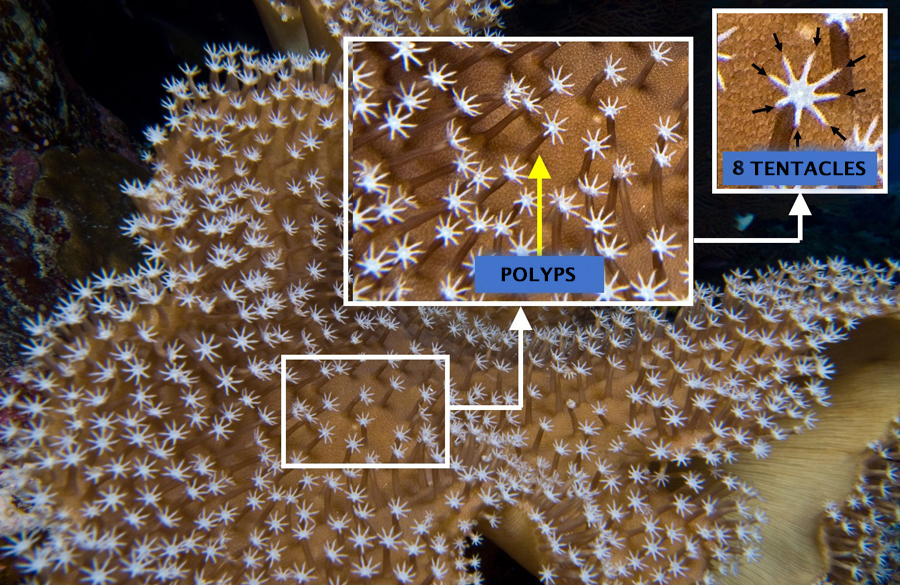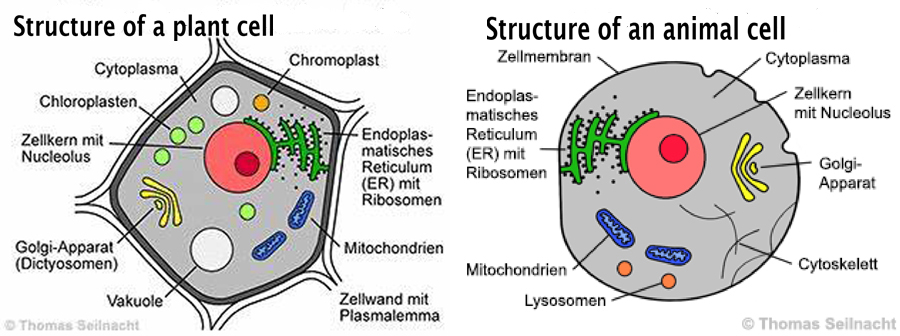FLOWER - CORAL
Why are corals called flower animals?
Are corals animals or plants? Or even both?
We want to get to the base of these questions.
For this we need to know how a coral is built and what distinguishes animals from plants.
The coral belongs to the group of nettle animals. The body structure is a hollow skeletonless cylinder with a mouth opening, called polyp, where the tentacles are located. With the tentacles plankton is taken in as food on the one hand and on the other hand they also serve for defense.

By the number of tentacles you can see to which subgroup the coral belongs. The polyp with 8 (only eight) tentacles belongs to the group of Octocorallia also known as soft coral.
The polyp with 6 or a multiple of 6 tentacles (12, 18, 24, etc.) belongs to the group of Hexacorallia also known as hard coral.
A single polyp can have a diameter of one to several millimeters. Almost all coral polyps form a colony.
What distinguishes animals from plants?
An animal eats and moves around. A plant does not eat, only needs earth, water and air to survive and does not move.
These differences are too imprecise and are not sufficient to determine the allocation whether animal or plant.
It was only with the development of the microscope, at the beginning of the 17th century, that scientists were able to see the cells, to recognize and understand their structure and characteristics.
The size of a cell usually varies from one to thirty microns.
One micrometer corresponds to a thousandth of a millimeter or 0.0001 millimeter
The cells of higher developed animals are larger and can be up to 0.1mm in size.
It was only with the development of the electron microscope, in 1930, that science was able to examine cells even more closely and make visible what was still unknown.
All living beings, animal and plant, consist of cells.
The cell, in the biological sense, is the smallest living unit of an organism.
Not all cells are equal. The cell of animals and plants, can be imagined as a ball filled with liquid. This sphere contains the cell nucleus and other units, including organelles.
Depending on the type of living being, the cells are structured differently.
Animals and plants can therefore be distinguished by the structure of the cell.
Plant cells have a cell wall, animal cells have no cell wall.

When examining the tentacles of the coral, it was found that they consist of cells that can be assigned to the animals.
This indicated that the coral can be assigned to the animals.
It was unclear what the reason is that coral is able to do exactly what the properties of plants are, namely to convert light into energy, known and explained as the process of photosynthesis.
During the microscopically exact investigation of coral polyps, it was found that the coral lives in a symbiosis with zooxanthellae.
The Zooxanthelle is clearly a plant cell.
Plants that can convert light into energy contain the organelles of chloroplasts in the cell nucleus. It was already suspected in 1883 that chloroplasts could exist.
Chloroplasts, in ancient Greek chloros = green and plastós = formed, are organelles of the cells of green algae and land plants that perform photosynthesis

It was not until the beginning of 1970 that the theory of the function of chloroplasts was scientifically established.
In summary, the coral was, and we rightly called a flower animal, although purely scientifically it belongs to the animal genus.
Photo coral polyp and tentacles: Johann Vifian
Sketch of the chloroplast by: Von Kelvinsong Source: https://de.wikipedia.org/wiki/Chloroplast
Sketch of cells: https://www.digitale Folien.de/biologie/pflanzen/bau/zell.html
